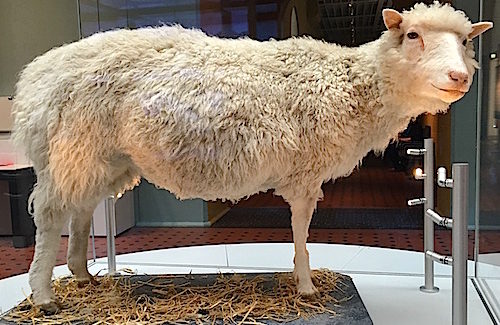Shore excursion: Saying hello to Dolly at National Museum of Scotland
Her frozen face seems to have a permanent perplexed look.
At the National Museum of Scotland, I saw the famous animal that captured my imagination. The museum itself – all Scottish museums have free admission – could well take a day to tour. It is huge and well organized.
Some of its treasures include a specimen of penicillin inscribed by Scotsman creator Alexander Fleming; the world’s oldest surviving color TV using a system invented in 1936 by Scottish engineer John Logie Baird; and a “humane” beheading machine named the Maiden. Between 1564 and 1710, when the Maiden was withdrawn from use, more than 150 people were executed with the device.
Ironically, the person believed to have introduced the idea to Scotland for a beheading machine was himself executed on June 2, 1581, by the Maiden. James Douglas, who ruled Scotland from 1572 to 1578, was implicated in the murder of Mary, Queen of Scots’ second husband, Lord Darnley. For that, he lost his head.
Among the many treasures at the museum, the one that seems to attract the most visitors is a stuffed sheep named Dolly, after Dolly Parton naturally. Permanently twirling in her glass case, Dolly is the world’s first mammal cloned by Scottish researchers from an adult cell.
Born July 5, 1996, Dolly died at age six from a lung infection and severe arthritis. The legacy of the world’s most famous sheep has not been the cloning of animals but in advances into stem cell research that may be used in fighting cancer and other diseases.
Seeing Dolly brought back memories of discussions about human cloning when her birth was announced. I feel the same way now as I did back then. If offered the chance to have myself cloned, would I be interested? Nope.















View Recent Comments